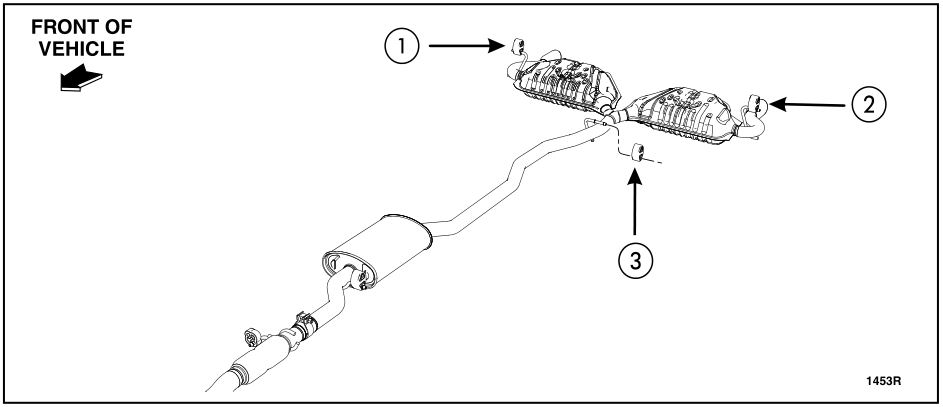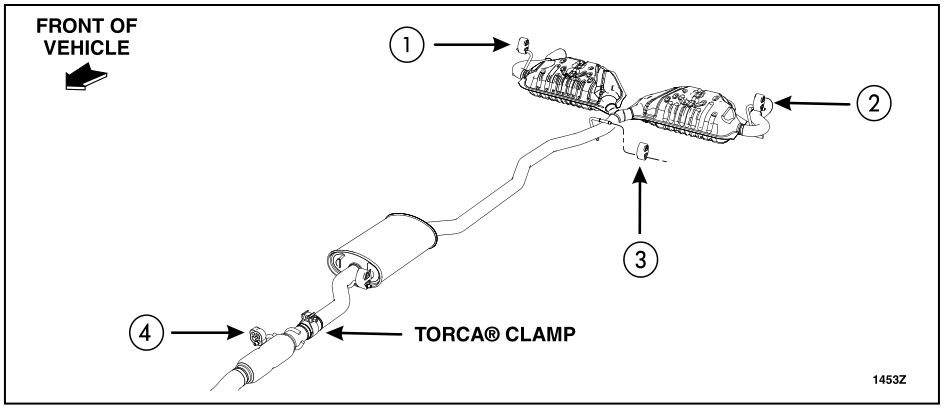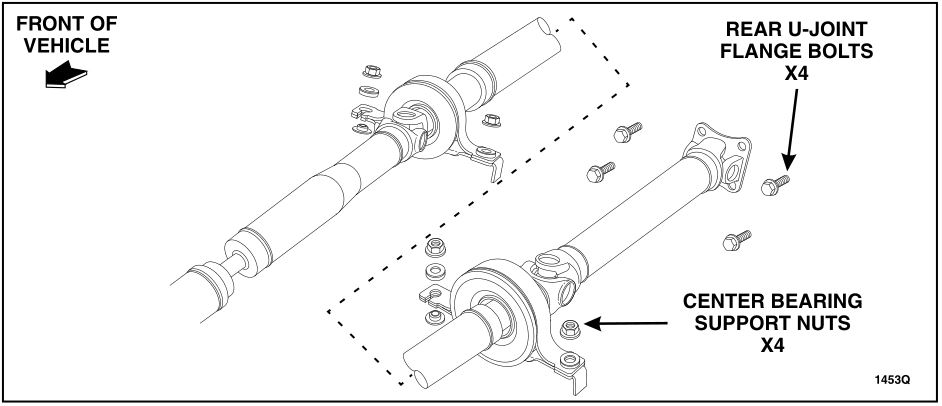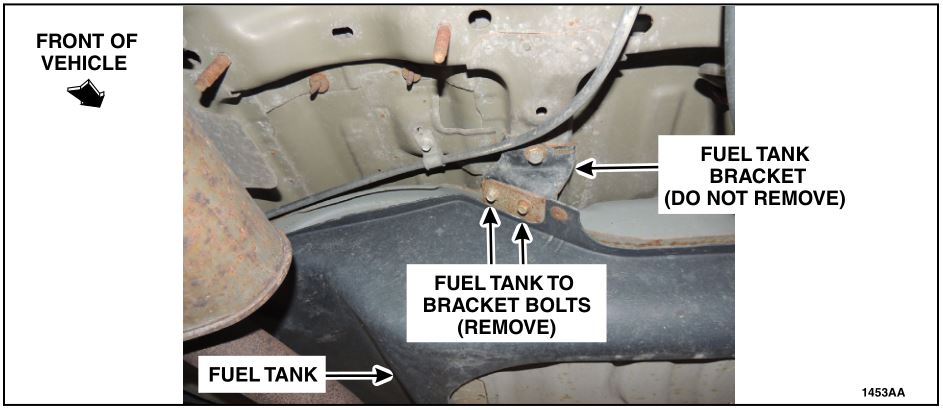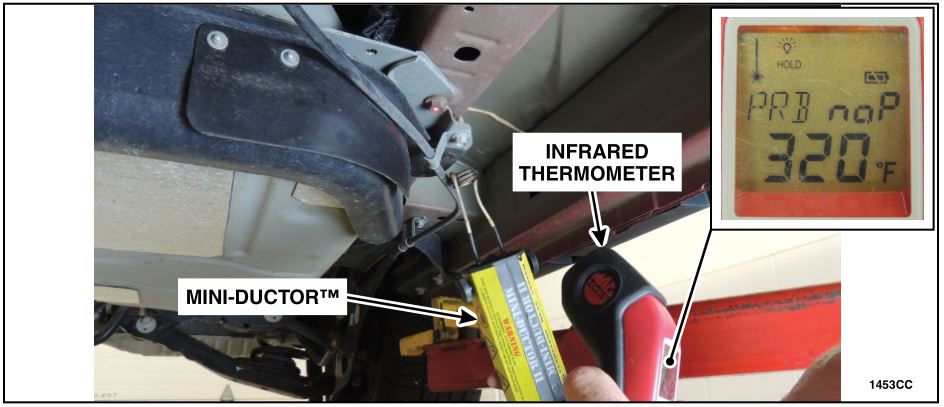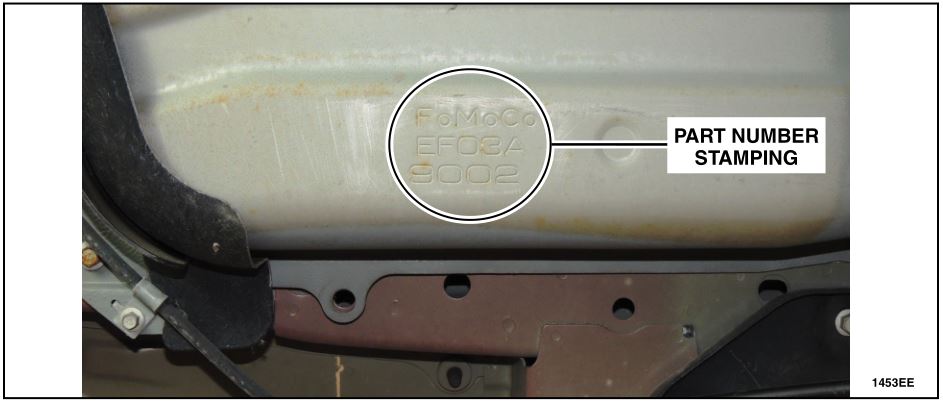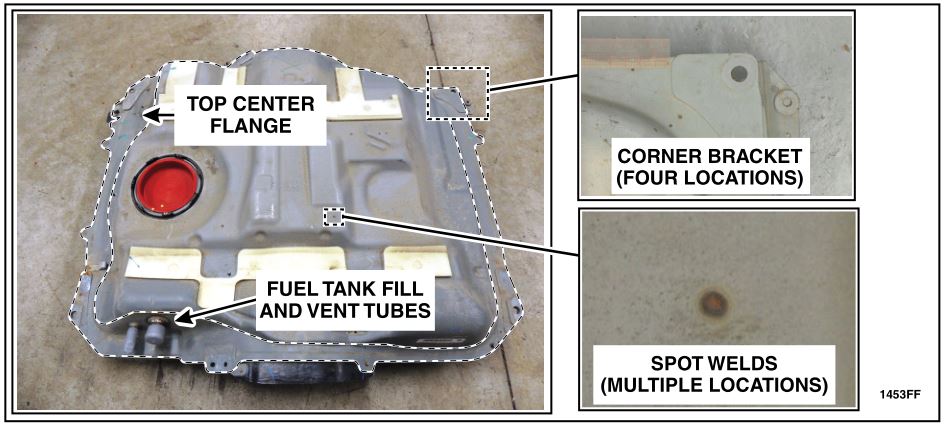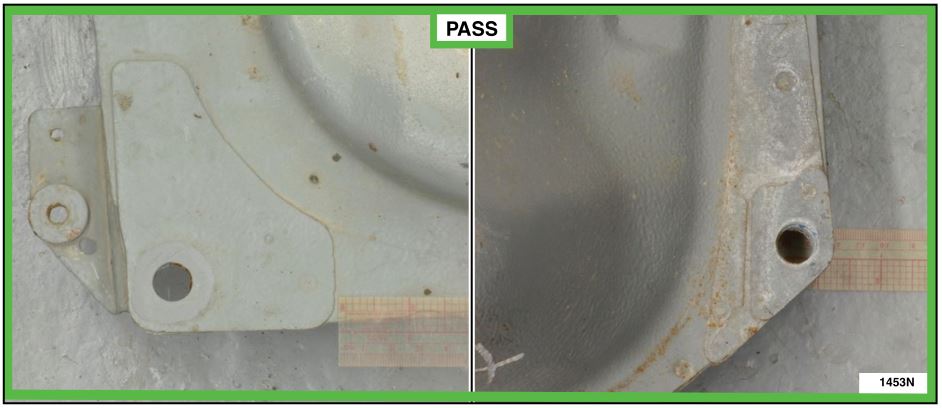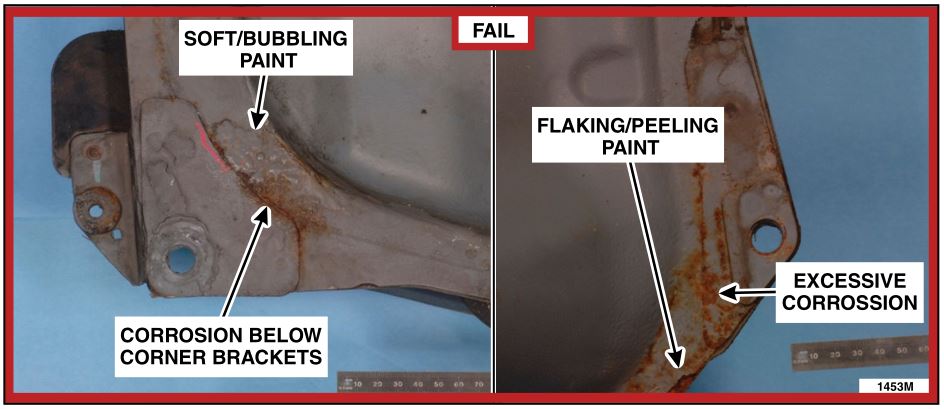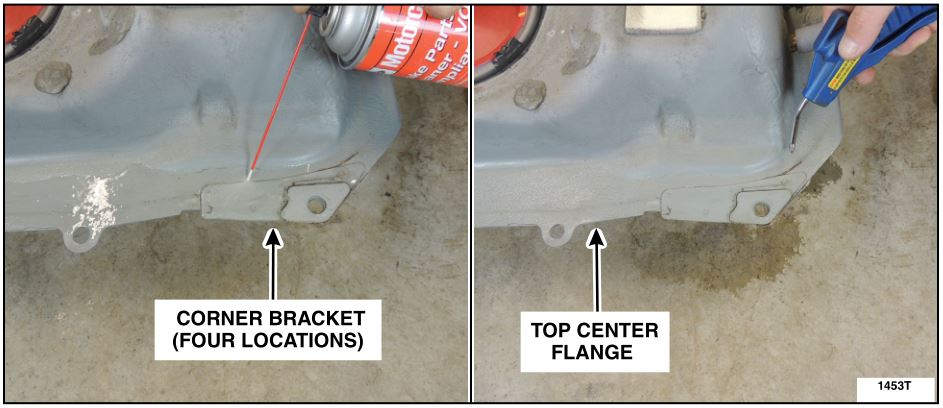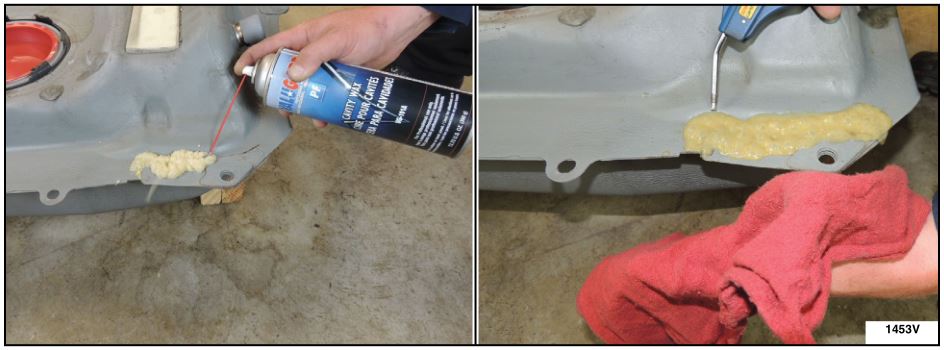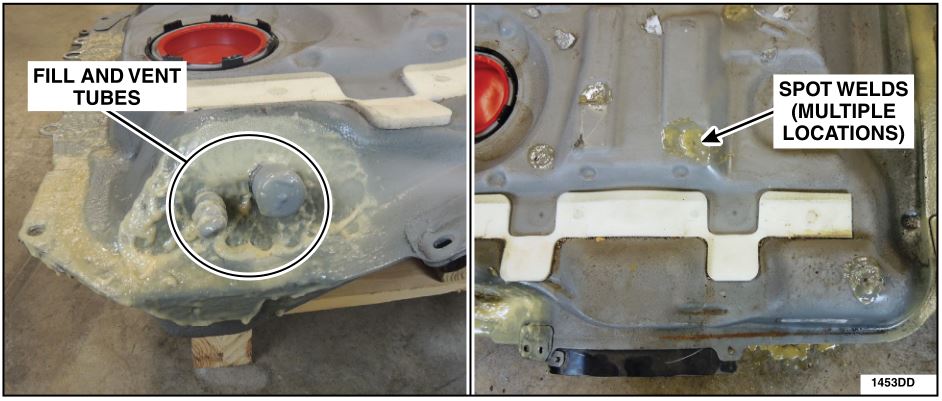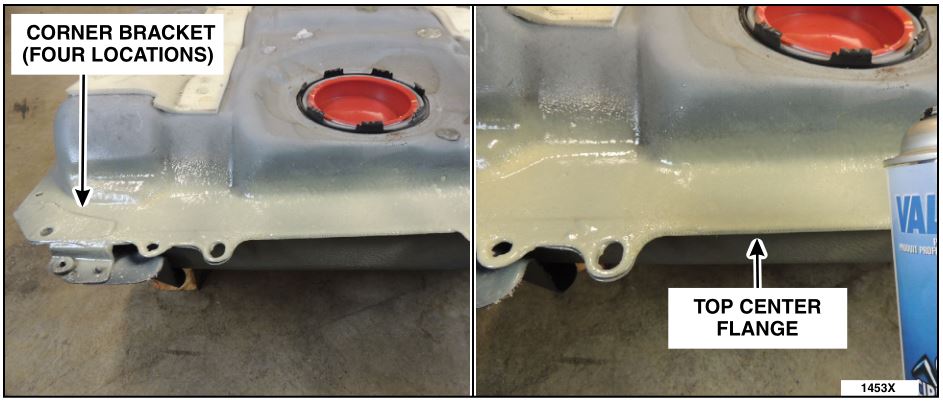| “This site contains affiliate links for which OEMDTC may be compensated” |
SUMMARY:
Ford Motor Company (Ford
Motor Company (Ford ) is recalling certain model year 2009-2010 Ford
) is recalling certain model year 2009-2010 Ford Edge vehicles manufactured September 11, 2008, to July 1, 2010, and Lincoln
Edge vehicles manufactured September 11, 2008, to July 1, 2010, and Lincoln MKX vehicles manufactured September 23, 2008, to July 1, 2010, originally sold in, or currently registered in, Connecticut, Delaware, Illinois, Indiana, Iowa, Kentucky, Maine, Maryland, Massachusetts, Michigan, Minnesota, Missouri, New Hampshire, New Jersey, New York, Ohio, Pennsylvania, Rhode Island, Vermont, West Virginia, Wisconsin and the District of Columbia.
MKX vehicles manufactured September 23, 2008, to July 1, 2010, originally sold in, or currently registered in, Connecticut, Delaware, Illinois, Indiana, Iowa, Kentucky, Maine, Maryland, Massachusetts, Michigan, Minnesota, Missouri, New Hampshire, New Jersey, New York, Ohio, Pennsylvania, Rhode Island, Vermont, West Virginia, Wisconsin and the District of Columbia.
Due to corrosion from salt water exposure such as from road salt use, the affected vehicles may leak fuel from the fuel tank seam weld under the tank mounting reinforcement brackets.
CONSEQUENCE:
A fuel leak in the presence of an ignition source increases the risk of a fire.
REMEDY:
Ford will notify owners, and dealers will inspect the vehicles and either clean and treat the fuel tank with a corrosion preventative or replace the tank, free of charge.
will notify owners, and dealers will inspect the vehicles and either clean and treat the fuel tank with a corrosion preventative or replace the tank, free of charge.
Owners were sent interim notices on December 18, 2015.
Owners will receive a second notice when remedy parts become available.
Owners may contact Ford customer service at 1-866-436-7332.
customer service at 1-866-436-7332.
Ford ’s number for this recall is 15S31.
’s number for this recall is 15S31.
NOTES:
Owners may also contact the National Highway Traffic Safety Administration Vehicle Safety Hotline at 1-888-327-4236 (TTY 1-800-424-9153), or go to www.safercar.gov.
Check if your Vehicle has a Recall
April 28, 2016
TO: All U.S. Ford and Lincoln
and Lincoln Dealers
Dealers
SUBJECT: Safety Recall 15S31 – Supplement #1
Certain 2009 through 2010 Model Year Edge and MKX Vehicles
Fuel Tank Corrosion Inspection and Repair
REASON FOR THIS SUPPLEMENT
- Parts availability: Parts are now available to repair all vehicles.
- Rental vehicles: Dealers are now pre-approved for up to five days of vehicle rental.
AFFECTED VEHICLES
| Vehicle | Model Year | Assembly Plant | Build Dates |
| Edge | 2009-2010 | Oakville | June 16, 2008 through July 1, 2010 |
| MKX |
Affected vehicles were originally sold in, or are currently registered in the following states:
| Connecticut | Iowa | Michigan | New York | West Virginia |
| Delaware | Kentucky | Minnesota | Ohio | Wisconsin |
| District of Columbia | Maine | Missouri | Pennsylvania | |
| Illinois | Maryland | New Hampshire | Rhode Island | |
| Indiana | Massachusetts | New Jersey | Vermont |
Affected vehicles are identified in OASIS and FSA VIN Lists.
NOTE: A separate Customer Satisfaction Program (15R02), covering inspections and repairs on affected vehicles located outside of the above listed corrosion states, will be released on April 28, 2016.
REASON FOR THIS SAFETY RECALL
In some of the affected vehicles which are operated in high-corrosion environments associated with road salt use, moisture and salt may become trapped under the fuel tank mounting reinforcement brackets at the four corners where the fuel tank is attached to the vehicle. Over time, corrosion under these reinforcement brackets can spread to the fuel tank which can result in a fuel leak. A fuel leak in the presence of an ignition source may result in a fire.
NOTE: This is the same concern and remedy as Safety Recall 14S22 for 2007-2008 Edge and MKX vehicles.
SERVICE ACTION
Dealers are to inspect the fuel tank for corrosion and either clean and treat or replace the fuel tank as needed. This service must be performed at no charge to the vehicle owner.
OWNER NOTIFICATION MAILING SCHEDULE
Owner Letters were mailed the week of December 14, 2015 advising owners that parts were not available in sufficient quantities to repair all vehicles. A follow-up notification will be sent to owners the week of May 2, 2016 informing them that parts are now available to repair their vehicles.
Dealers should inspect and repair any affected vehicles that arrive at their dealerships, whether or not the customer has received a letter.
ATTACHMENTS
Attachment I: Administrative Information
Attachment II: Labor Allowances and Parts Ordering Information
Attachment III: Technical Information
Owner Notification Letters
Recall Reimbursement Plan
QUESTIONS & ASSISTANCE
For questions and assistance, contact the Special Service Support Center (SSSC) via the SSSC Web Contact Site. The SSSC Web Contact Site can be accessed through the Professional Technician Society (PTS) website using the SSSC link listed at the bottom of the OASIS VIN report screen or listed under the SSSC tab.
ATTACHMENT I
Safety Recall 15S31 – Supplement #1
Certain 2009 through 2010 Model Year Edge and MKX Vehicles
Fuel Tank Corrosion Inspection and Repair
OASIS ACTIVATION
OASIS will be activated on October 27, 2015.
FSA VIN LISTS ACTIVATION
FSA VIN Lists will be available through https://web.fsavinlists.dealerconnection.com on October 27, 2015. Owner names and addresses will be available by May 27, 2016.
NOTE: Your FSA VIN Lists may contain owner names and addresses obtained from motor vehicle registration records. The use of such motor vehicle registration data for any purpose other than in connection with this recall is a violation of law in several states, provinces, and countries.
Accordingly, you must limit the use of this listing to the follow-up necessary to complete this recall.
STOCK VEHICLES
Use OASIS to identify any affected vehicles in your used vehicle inventory.
SOLD VEHICLES
- Owners of affected vehicles will be directed to dealers for repairs.
- Immediately contact any of your affected customers whose vehicles are not on your VIN list but are identified in OASIS. Give the customer a copy of the Owner Notification Letter and schedule a service date.
- Correct other affected vehicles identified in OASIS which are brought to your dealership.
TITLE BRANDED / SALVAGED VEHICLES
Affected title branded and salvaged vehicles are eligible for this recall.
ADDITIONAL LABOR TIME AND/OR PARTS
Submit a request to the SSSC Web Contact Site prior to the repair if you have any of the following:
- Damage that you believe was caused by the covered condition.
- A condition that requires additional labor and/or parts to complete the repair.
- For repairs where additional time is needed due to difficulty removing fuel tank bolts, etc., dealers are authorized to claim up to 2.0 hours actual time without contacting the SSSC Web Contact Site for approval.
- Claims for additional parts or labor over 2.0 hours should be submitted to the SSSC as a Related Damage contact.
- Aftermarket equipment or non-Ford
 modifications to the vehicle which might prevent the repair of the covered condition.
modifications to the vehicle which might prevent the repair of the covered condition.
Requests for approval after completion of the repair may not be granted. Ford Motor Company reserves the right to deny coverage for related damage in cases where the vehicle owner has not had this recall performed on a timely basis. Additional related damage parts are subject to random selection for return to the Ford
Motor Company reserves the right to deny coverage for related damage in cases where the vehicle owner has not had this recall performed on a timely basis. Additional related damage parts are subject to random selection for return to the Ford Warranty Parts Analysis Center (WPAC).
Warranty Parts Analysis Center (WPAC).
OWNER REFUNDS
- This safety recall must still be performed, even if the owner has paid for a previous repair. Claiming a refund will not close the recall on the vehicle.
- Ford
 Motor Company is offering a refund for owner-paid repairs covered by this recall if the repair was performed prior to the date indicated in the reimbursement plan, which is posted with this bulletin. Owners are directed to seek reimbursement through authorized dealers or, at their option, directly through Ford
Motor Company is offering a refund for owner-paid repairs covered by this recall if the repair was performed prior to the date indicated in the reimbursement plan, which is posted with this bulletin. Owners are directed to seek reimbursement through authorized dealers or, at their option, directly through Ford Motor Company at P.O. Box 6251, Dearborn, MI 481216251.
Motor Company at P.O. Box 6251, Dearborn, MI 481216251. - Dealers are also pre-approved to refund owner-paid emergency repairs that were performed away from an authorized servicing dealer after the end date specified in the reimbursement plan. Non-covered repairs, or those judged by Ford
 to be excessive, will not be reimbursed.
to be excessive, will not be reimbursed. - Refunds will only be provided for the cost associated with corrosion-related fuel tank repairs or replacement.
RENTAL VEHICLES
If a customer’s vehicle requires the replacement of the fuel tank and it is necessary to order parts, Ford Motor Company has pre-approved up to five days of vehicle rental. The daily rate can include applicable taxes but must not exceed $55.00. Rentals will only be reimbursed for the day(s) the vehicle is at the dealership for part replacement. Prior approval for more than five rental days is required from the SSSC via the SSSC Web Contact Site.
Motor Company has pre-approved up to five days of vehicle rental. The daily rate can include applicable taxes but must not exceed $55.00. Rentals will only be reimbursed for the day(s) the vehicle is at the dealership for part replacement. Prior approval for more than five rental days is required from the SSSC via the SSSC Web Contact Site.
CLAIMS PREPARATION AND SUBMISSION
- Enter claims using Direct Warranty Entry (DWE) or One Warranty Solution (OWS).
- DWE: refer to ACESII manual for claims preparation and submission information.
- OWS: when entering claims in DMS software, select claim type 31: Field Service Action. The FSA number (15S31) is the sub code.
- Additional parts and/or labor must be claimed as related damage on a repair line that is separate from the repair line on which the FSA is claimed.
- Dealers are authorized to claim up to 2.0 hours of additional time as related damage using labor operation MT15S31 without contacting the SSSC for approval.
- Additional parts and/or labor time over0 hours requires prior approval from the SSSC via the SSSC Web Contact Site.
- Claim up to $55.00 per day for customer rental vehicles. Enter the total amount of the rental expense under Miscellaneous Expense code “Rental”.
- Submit refunds on a separate repair line.
- Program Code: 15S31 – Misc. Expense: ADMIN
- Misc. Expense: REFUND – Misc. Expense: 0.2 Hrs.
- Multiple refunds should be submitted on one repair line and the invoice details for each repair should be detailed in the comments section of the claim.
- Provision for Locally Obtained Supplies: Valugard VG-101A rust inhibitor aerosol or Daubert NOX RUST 7703-W aerosol. Submit on the same line as the repair.
- Program Code: 15S31
- Expense: OTHER
- Expense: Claim up to $8.00
ATTACHMENT II
Safety Recall 15S31 – Supplement #1
Certain 2009 through 2010 Model Year Edge and MKX Vehicles
Fuel Tank Corrosion Inspection and Repair
LABOR ALLOWANCES
| Description | Vehicle Type | Labor Operation | Labor Time |
| Remove, Clean, and Treat Fuel Tank Includes inspection (pass). | FWD vehicles | 15S31B | 1.7 Hours |
| Remove, Clean, and Treat Fuel Tank Includes inspection (pass). | AWD vehicles | 2.0 Hours | |
| Remove and Replace Fuel Tank
Includes inspection (fail) and transfer of parts. | FWD vehicles | 15S31C | 1.6 Hours |
| Remove and Replace Fuel Tank
Includes inspection (fail) and transfer of parts. | AWD vehicles | 2.0 Hours |
PARTS REQUIREMENTS / ORDERING INFORMATION
| Part Number | Part Name | Order Quantity |
|---|---|---|
| FWD vehicles | ||
| AT4Z-9002-DCP | Fuel tank assembly (replace only if inspection failed) | 1 |
| 4L3Z-9276-AA | Fuel pump o-ring (replace only if inspection failed) | 1 |
| W713928-S438 | Fuel tank bolts (4/package, 4 needed) | 1 |
| W506023-S439 | Fuel tank to bracket bolts (4/package, 4 needed) | 1 |
| AWD vehicles | ||
| AT4Z-9002-CCP | Fuel tank assembly (replace only if inspection failed) | 1 |
| 4L3Z-9276-AA | Fuel pump o-ring (replace only if inspection failed) | 1 |
| W713928-S438 | Fuel tank bolts (4/package, 4 needed) | 1 |
| W506023-S439 | Fuel tank to bracket bolts (4/package, 4 needed) | 1 |
W711918-S439 | Rear driveshaft flange bolts (4/package, 4 needed) | 1 |
| W520113-S440 | Driveshaft center support bearing nuts (4/package, 4 needed) | 1 |
| Additional materials for fuel tank anti-corrosion treatment | ||
| VG-101A | Valugard rust inhibitor aerosol (obtain from www.valugard.net) | Claim anticorrosion
treatment as MISC OTHER |
| 7703-W | Daubert NOX RUST aerosol (obtain from www.daubertchemical.com) | |
| PM4A | Motorcraft metal brake parts cleaner (or equivalent) | 1 |
| PM-4-B | ||
The DOR/COR number for this recall is 51010.
Order your parts through normal order processing channels.
DEALER PRICE
For latest prices, refer to DOES II.
PARTS RETENTION AND RETURN
Follow the provisions of the Warranty and Policy Manual, Section 1 “WARRANTY PARTS RETENTION AND RETURN POLICIES.”
EXCESS STOCK RETURN
Excess stock returned for credit must have been purchased from Ford Customer Service Division in accordance with Policy Procedure Bulletin 4000.
Customer Service Division in accordance with Policy Procedure Bulletin 4000.
ATTACHMENT III
CERTAIN 2009 THROUGH 2010 MODEL YEAR EDGE AND MKX VEHICLES — FUEL TANK CORROSION INSPECTION AND REPAIR
OVERVIEW
In some of the affected vehicles which are operated in high-corrosion environments associated with road salt use, moisture and salt may become trapped under the fuel tank mounting reinforcement brackets at the four corners where the fuel tank is attached to the vehicle. Over time, corrosion under these reinforcement brackets can spread to the fuel tank which can result in a fuel leak. A fuel leak in the presence of an ignition source may result in a fire.
SERVICE PROCEDURE
WARNING: do not smoke, carry lighted tobacco or have an open flame of any type when working on or near any fuel-related component. Highly flammable mixtures are always present and may be ignited. Failure to follow these instructions may result in serious personal injury.
WARNING: do not carry personal electronic devices such as cell phones, pagers or audio equipment of any type when working on or near any fuel-related component. Highly flammable mixtures are always present and may be ignited. Failure to follow these instructions may result in serious personal injury.
WARNING: Before working on or disconnecting any of the fuel tubes or fuel system components, relieve the fuel system pressure to prevent accidental spraying of fuel. Fuel in the fuel system remains under high pressure, even when the engine is not running. Failure to follow this instruction may result in serious personal injury.
WARNING: Remove the fuel filler cap slowly. The fuel system may be under pressure. If the fuel filler cap is venting vapor or if you hear a hissing sound, wait until it stops before completely removing the fuel filler cap. Otherwise, fuel may spray out. Failure to follow these instructions may result in serious personal injury.
WARNING: When handling fuel, always observe fuel handling precautions and be prepared in the event of fuel spillage. Spilled fuel may be ignited by hot vehicle components or other ignition sources. Failure to follow these instructions may result in serious personal injury.
Fuel Tank Removal Procedure
All Vehicles
- Position vehicle on a hoist. Please follow Workshop Manual (WSM) procedures in Section 100-02.
- Check fuel level indication on instrument cluster and drain fuel if needed.
- Release the fuel system pressure. Please follow WSM procedures in Section 310-00.
- Disconnect the battery ground cable. Please follow WSM procedures in Section 414-01.
- Lower or remove the muffler and tailpipe as follows:
NOTE: Do not damage or tear the isolators during removal. Do not use oil or grease-based lubricants on the isolators. They may cause deterioration of the rubber. Use soapy water as needed to separate the isolators from the vehicle.
Front Wheel drive (FWD) Vehicles
- Detach the three (3) muffler and tailpipe assembly rear isolators. See Figure 1.
- Position the rear of the exhaust system down approximately 305 mm (12 in) and support using a jack stand.
FIGURE 1
All Wheel drive (AWD) Vehicles
Detach the four (4) muffler and tailpipe assembly isolators. See Figure 2.- Loosen the Torca clamp and remove the exhaust system from the vehicle.
NOTE: Install a new Torca clamp, if necessary, following the procedures in Section 309-00.
FIGURE 2
- With the help of an assistant, detach and position the rear of the driveshaft aside as follows: See Figure 3.
- Remove and discard the four (4) rear u-joint flange bolts at the differential assembly.
- Remove and discard the two (2) or four (4) center bearing support nuts. Position and secure the driveshaft up and to the left side of the vehicle.
FIGURE 3
All Vehicles
- Install a suitable lifting device under the fuel tank.
- Disconnect the fuel tank wiring harness electrical connector.
- Disconnect the Fuel Tank Pressure (FTP) sensor electrical connector.
- Disconnect the fuel vapor tube assembly-to-fuel tank quick connect coupling. Please follow WSM procedures in Section 310-00.
- Release the clamp and disconnect the fuel tank filler pipe hose from the fuel tank.
- Disconnect the fuel tank jumper tube-to-fuel tube quick connect coupling. Please follow WSM procedures in Section 310-00.
- Remove the two (2) parking brake cable bracket bolts and position cables aside.
NOTICE: Position the lifting device securely against the fuel tank prior to loosening any fuel tank attaching bolts.
- Remove the fuel tank bolts as follows:
- Remove and discard two (2) bolts attaching the fuel tank to the fuel tank brackets at both the front center and rear center of the tank (four (4) bolts total). Leave the brackets attached to the vehicle. See Figure 4.
- Remove and discard the four (4) bolts (one at each corner) attaching the fuel tank to the body.
NOTE: Two (2) rear center fuel tank to bracket bolts shown, two (2) front center fuel tank to bracket bolts similar.
FIGURE 4
NOTE: AWD vehicles require the fuel tank to be positioned forward, past the Rear Differential Unit (RDU), then lowered. FWD vehicles require the fuel tank be partially lowered onto a 102 mm (4 in) by 102 mm (4 in) piece of lumber (or equivalent) placed under the right side of the tank and then lifted and lowered over the exhaust and out the drivers side of the vehicle.
NOTE: If you experience difficulty removing fuel tank corner attaching bolts, it may be necessary to safely heat the bolts during removal. If necessary, use the following procedure.
WARNING: Only use Mini-ductor or equivalent heating device if there is no visible fuel leak and no fuel smell that could be the result of a fuel leak. do not allow the temperature of the bolt to rise above 165°C (330°F).
- Using a Mini-Ductor or equivalent and infrared thermometer, heat the corner attaching bolts one at a time to approximately 160°C (320°F). See Figure 5.
- Use an air impact gun to remove each bolt immediately after it is heated.
FIGURE 5
Fuel Tank Inspection Procedure
- Inspect the bottom side of the fuel tank for a “FoMoCo” part number stamping. See Figure 6.
FIGURE 6
- If necessary, use a stiff nylon brush and Motorcraft Metal Brake Parts Cleaner to clean any heavy deposits of dirt/debris from around the top center flange area of the fuel tank so the metal in the corner bracket areas can be inspected for rust/corrosion. See Figure 7.
NOTE: DO NOT use a metal or wire brush or scraper. This will compromise the coatings on the tank.
- Inspect the fuel tank corner bracket areas, fuel filler and vent tube attachment areas and other areas of the fuel tank for signs of leaks or corrosion. See Figures 7, 8a-8b, and 9a-9b.
FIGURE 7
A fuel tank PASSES the inspection procedure if there are no signs of leaks, soft/bubbling paint or corrosion at the edges of the corner brackets, fuel filler and vent tube attachment areas, or other areas of the fuel tank. If the fuel tank passes the inspection, continue to Fuel Tank Corrosion Treatment Procedure on the next page. See Figures 8a and 8b.
FIGURE 8a FIGURE 8b
Conditions that indicate a fuel tank FAILS and must be replaced include:
- Any soft or bubbling paint that is easily scraped from the surface of the tank at ANY location.
- Any corrosion stemming from below the corner brackets that has compromised the surface of the metal.
- Excessive corrosion at the weld seam around the top center flange of the tank, at the base of the fuel inlet and vent ports, and on top of the tank at the baffle spot welds.
If the fuel tank fails the inspection, replace the tank and proceed to Fuel Tank Installation Procedure on Page 11. See Figures 9a and 9b.
FIGURE 9a FIGURE 9b
Fuel Tank Corrosion Treatment Procedure
- Using a stiff nylon brush and Motorcraft Metal Brake Parts Cleaner, clean the top surface area of all four (4) corner brackets and surrounding area of the center tank flange.
NOTE: DO NOT use a metal or wire brush or scraper. This will compromise the coatings on the tank.
- Clean the area around the fuel fill and vent tubes.
- Clean the spot welds on top of the tank.
- Wipe clean with shop towel.
- Spray Motorcraft Metal Brake Parts Cleaner under each of the corner brackets using the supplied aerosol spray tube. See Figure 10a.
- Use compressed air regulated to approximately 137 kpa (20 psi) to spray under the corner brackets to clean/dry the surfaces under them. See Figure 10b.
FIGURE 10a FIGURE 10b
- Spray anti-corrosion treatment under each corner bracket using the supplied aerosol spray tube. See Figure 11a.
- Use compressed air regulated to approximately 137 kpa (20 psi) to force the anti-corrosion treatment under each of the corner brackets. See Figure 11b.
FIGURE 11a FIGURE 11b
- Repeat spraying a second application of anti-corrosion treatment under each of the corner brackets but DO NOT use compressed air on the second application.
NOTE: Before applying anti-corrosion treatment to the fuel tank surface, cover the filler neck and vent tube with a suitable cover to keep these areas free of the treatment. See Figure 12a.
- Remove the aerosol tube and apply a heavy coat of anti-corrosion treatment over the following areas of the fuel tank: See Figures 7 and 12a-12d.
- Around the fill and vent tubes.
- All spot welds on top of the tank.
- Corner bracket areas.
- On the top center flange around the entire perimeter of the tank.
FIGURE 12a FIGURE 12b
FIGURE 12c FIGURE 12d
11. Reinstall the fuel tank per the Fuel Tank Installation Procedure on Page 11.
Fuel Tank Installation Procedure
All Vehicles
NOTE: If installing a new fuel tank, the fuel pump module and the fuel level sensor (AWD) must be transferred to the new fuel tank (lubricate the fuel level sensor seal with clean oil to aid in sensor installation), following the procedures in Section 310-01.
- Using a suitable lifting device, raise the fuel tank into position.
- Install the four (4) new fuel tank bolts (one at each corner).
- Tighten to 25 Nm (18 lb-ft).
NOTE: The brackets may need to be loosened slightly to reposition them if the center bracket to tank attaching holes do not line up. If necessary, safely heat the bolts using the procedure on page 5.
- Install the four (4) new fuel tank to bracket bolts. See Figure 4.
- Tighten to 25 Nm (18 lb-ft).
- Position the parking brake cables and install the two (2) parking brake cable bracket bolts.
- Tighten to 23 Nm (17 lb-ft).
- Connect the fuel tank jumper tube-to-fuel tank quick connect coupling. Please follow WSM procedures in Section 310-00.
- Connect the fuel tank pressure sensor.
- Connect the fuel tank wiring harness connector.
FWD Vehicles
- Attach the three (3) muffler and tailpipe assembly isolators. See Figure 1.
AWD Vehicles
- Position the driveshaft and install the two (2) or four (4) new center bearing support nuts. See Figure 3.
- Tighten to 40 Nm (30 lb-ft).
- Position the driveshaft and install the four (4) new rear u-joint flange bolts. See Figure 3.
- Tighten to 70 Nm (52 lb-ft).
NOTE: Install a new Torca clamp, if necessary, following WSM procedures in Section 309-00.
- Install the muffler and tailpipe assembly and attach the four (4) isolators. See Figure 2.
All Vehicles
Ford Motor Company Recall Reimbursement Plan for 15S31
Motor Company Recall Reimbursement Plan for 15S31
Ford and Lincoln
and Lincoln dealers are in the best position to quickly and efficiently process reimbursement requests. However, federal legislation requires all motor vehicle manufacturers to establish processes through which customers may seek recall reimbursement directly from the manufacturer or from the dealers.
dealers are in the best position to quickly and efficiently process reimbursement requests. However, federal legislation requires all motor vehicle manufacturers to establish processes through which customers may seek recall reimbursement directly from the manufacturer or from the dealers.
Regarding the specific reimbursement plan for Recall # 15S31, owners who have paid for service to remedy the defect or noncompliance must have had that service performed prior to January 31, 2016. After this date, if repairs related to this recall are performed by a non-Ford repair facility in an emergency situation, customers must submit any refund requests through their dealership. As required by this federal regulation, Ford
repair facility in an emergency situation, customers must submit any refund requests through their dealership. As required by this federal regulation, Ford Motor Company submitted the details of its latest General Recall Reimbursement Plan in a letter to the National Highway Traffic Safety Administration (NHTSA) in February 2015. The following is the text of that letter and the Plan:
Motor Company submitted the details of its latest General Recall Reimbursement Plan in a letter to the National Highway Traffic Safety Administration (NHTSA) in February 2015. The following is the text of that letter and the Plan:
General Recall Reimbursement Plan
(As submitted to the NHTSA)
Pursuant to the requirements set forth in 49 CFR Part 573 and Part 577 of the Code of Federal Regulations, Ford Motor Company (Ford
Motor Company (Ford ) is submitting required information pertaining to our general reimbursement plan for the cost of remedies paid for by vehicle owners before they are notified of a related safety recall.
) is submitting required information pertaining to our general reimbursement plan for the cost of remedies paid for by vehicle owners before they are notified of a related safety recall.
Set forth below is Ford ’s general plan to reimburse owners and purchasers for costs incurred for remedies in advance of notification of potential safely-related defects or noncompliances pursuant to Part 573.6 (c)(8)(i). This plan has not changed since our February 20, 2015 submission.
’s general plan to reimburse owners and purchasers for costs incurred for remedies in advance of notification of potential safely-related defects or noncompliances pursuant to Part 573.6 (c)(8)(i). This plan has not changed since our February 20, 2015 submission.
Reimbursement Notification
Ford ’s notice to a vehicle owner in accordance with 49 CFR Part 577 will indicate that Ford
’s notice to a vehicle owner in accordance with 49 CFR Part 577 will indicate that Ford is offering a refund if the owner paid to have service to remedy the defect or noncompliance prior to a specified ending date. In accordance with Part 573.13 (c)(2), this ending date will be defined as a minimum of ten calendar days after the date on which Ford
is offering a refund if the owner paid to have service to remedy the defect or noncompliance prior to a specified ending date. In accordance with Part 573.13 (c)(2), this ending date will be defined as a minimum of ten calendar days after the date on which Ford mailed the last of its Part 577 notifications to owners, and will be indicated in the specific reimbursement plan available to owners for an individual recall. This notice will direct owners to seek eligible reimbursement through authorized dealers or, at their option, directly through Ford
mailed the last of its Part 577 notifications to owners, and will be indicated in the specific reimbursement plan available to owners for an individual recall. This notice will direct owners to seek eligible reimbursement through authorized dealers or, at their option, directly through Ford at the following address:
at the following address:
Ford Motor Company
Motor Company
P.O. Box 6251
Dearborn, MI 48121-6251
Ford notes that this rule allows for the identification of a beginning date for reimbursement eligibility. Under the rule, an owner who paid to remedy the defect or noncompliance prior to the identified beginning date would not be eligible for reimbursement. Ford
notes that this rule allows for the identification of a beginning date for reimbursement eligibility. Under the rule, an owner who paid to remedy the defect or noncompliance prior to the identified beginning date would not be eligible for reimbursement. Ford generally has not established such a beginning date for reimbursement eligibility and does not presently anticipate changing this general policy. However, in any case where Ford
generally has not established such a beginning date for reimbursement eligibility and does not presently anticipate changing this general policy. However, in any case where Ford determines a beginning date is appropriate, Ford
determines a beginning date is appropriate, Ford will indicate that date in the owner notice. As permitted by 577.11(e), Ford
will indicate that date in the owner notice. As permitted by 577.11(e), Ford may not include a reimbursement notification when all vehicles are well within the warranty period, subject to approval by the agency.
may not include a reimbursement notification when all vehicles are well within the warranty period, subject to approval by the agency.
Costs to be Reimbursed
For vehicles, reimbursement will not be less than the lesser of:
- The amount paid by the owner for the remedy that specifically addressed and was reasonably necessary to correct the defect or noncompliance that is the subject of the recall, or
- The cost of parts for the remedy (to be no more than the manufacturer’s list retail price for authorized part(s), plus associated labor at local labor rates, miscellaneous fees (such as disposal of waste) and taxes.
For replacement equipment, reimbursement will be the amount paid by the owner for the replacement item (limited by the amount of the retail list price of the defective or noncompliant item that was replaced, plus taxes, where the brand or model purchased by the owner was different than the brand or model that was the subject of the recall). If the item of motor vehicle equipment was repaired, the reimbursement provisions identified above for vehicles will apply.
Ford notes that costs incurred by the owner within the period during which Ford
notes that costs incurred by the owner within the period during which Ford ’s original or extended warranty would have provided for a free repair of the problem will not be eligible for reimbursement, as provided by Part 573.13 (d)(1).
’s original or extended warranty would have provided for a free repair of the problem will not be eligible for reimbursement, as provided by Part 573.13 (d)(1).
Entities Authorized to Provide Reimbursement
Ford will continue to use authorized dealers to reimburse owners under the specific reimbursement plans for a particular recall, and will encourage owners to pursue requests for reimbursement directly through dealers to expedite reimbursement. Ford
will continue to use authorized dealers to reimburse owners under the specific reimbursement plans for a particular recall, and will encourage owners to pursue requests for reimbursement directly through dealers to expedite reimbursement. Ford will also provide a mailing address to which customers can, at their option, send requests for reimbursement directly to Ford
will also provide a mailing address to which customers can, at their option, send requests for reimbursement directly to Ford , as previously noted. Requests for reimbursement sent directly to Ford
, as previously noted. Requests for reimbursement sent directly to Ford may take up to 60 days to process. Whether the owner chooses to pursue reimbursement requests through a dealer or directly through Ford
may take up to 60 days to process. Whether the owner chooses to pursue reimbursement requests through a dealer or directly through Ford , the owner will be directed to submit the required documentation, upon which reimbursement eligibility will be determined.
, the owner will be directed to submit the required documentation, upon which reimbursement eligibility will be determined.
Required Documentation
The reimbursement determination will depend upon the information provided by the customer. Consistent with Part 573.13 (d)(4) the following information must be submitted:
- Claimant name and address
- Vehicle make, model, and model year
- Vehicle identification number (VIN) and, for replacement equipment, a description of such equipment or, for tires, the model, size and TIN (DOT code)
- Identification of the recall number (either the Ford
 recall number or the NHTSA recall number)
recall number or the NHTSA recall number) - Identification of the owner of the recalled vehicle at the time that the pre-notification remedy was obtained
- An original receipt for the pre-notification remedy that includes a breakdown of the amount for parts, labor, other costs and taxes, including costs for the replacement item. Where the receipt covers work other than to address the recall or noncompliance, Ford
 may require the claimant to separately identify costs that are eligible for reimbursement.
may require the claimant to separately identify costs that are eligible for reimbursement. - If the remedy was obtained during the warranty period, documentation indicating that the warranty was not honored or the warranty repair did not correct the problem related to the recall.
Failure to submit all of the above information may result in denial of the reimbursement request.
Additional Information
The Part 577 required owner notice will provide a toll-free telephone number through which specific information about the reimbursement plan can be requested from Ford . This general reimbursement plan will be incorporated into notifications pursuant to Part 573.6 by reference. Information specific to an individual recall also may be incorporated into the Part 573.6 notification.
. This general reimbursement plan will be incorporated into notifications pursuant to Part 573.6 by reference. Information specific to an individual recall also may be incorporated into the Part 573.6 notification.
December 2015
* * * IMPORTANT SAFETY RECALL * * *
(PROGRAMA DE SEGURIDAD IMPORTANTE)
Safety Recall Notice 15S31 / NHTSA Recall 15V712
Aviso de Revisión de Seguridad 15S31
Mr. John Sample
123 Main Street
Anywhere, USA 12345
Your Vehicle Identification Number (VIN): 12345678901234567
This notice is sent to you in accordance with the National Traffic and Motor Vehicle Safety Act.
Ford Motor Company has decided that a defect which relates to motor vehicle safety exists in your vehicle, with the VIN shown above.
Motor Company has decided that a defect which relates to motor vehicle safety exists in your vehicle, with the VIN shown above.
We apologize for this situation and want to assure you that, with your assistance, we will correct this condition. Our commitment, together with your dealer, is to provide you with the highest level of service and support.
| What is the issue? | If your vehicle is operated in high corrosion areas for an extended period (where salt is used on the roadways during winter months), it is possible that salt and moisture may become trapped under the fuel tank mounting reinforcement brackets. Over time, corrosion under these reinforcement brackets can spread to the fuel tank that can result in a fuel leak. If a leak occurs, you may experience symptoms of a fuel odor, fuel on the ground, or illumination of the “Service Engine Soon” indicator. Fuel leakage in the presence of an ignition source may result in a fire. |
What should you do?
 Service Engine Soon Indicator | If your vehicle exhibits symptoms of a fuel odor, fuel on the ground, or illumination of the “Service Engine Soon” indicator (shown to the left), please contact your dealer and request a service appointment for diagnosis and repair relating to Safety Recall 15S31. Provide the dealer with the VIN of your vehicle, which is printed near your name at the beginning of this letter.
If your vehicle does not exhibit these symptoms, Ford |
| What will Ford and your dealer do? | When parts for Safety Recall 15S31 become available to repair all vehicles, you will be notified by Ford Motor Company via mail to schedule a service
appointment with your dealer to inspect, and either clean and treat or replace the fuel tank. Parts to repair all vehicles are anticipated to be available in the second quarter of 2016. We apologize for any inconvenience these part shortages may cause you. We are working closely with our suppliers to accelerate part availability. Until parts become available to repair all vehicles, if your vehicle exhibits symptoms of a fuel odor, fuel on the ground, or illumination of the “Service Engine Soon” warning indicator, contact your dealer and request a service date for Safety Recall 15S31. This repair will be completed free of charge (parts and labor). |
| How long will it take? | The time needed for this repair is less than one-half day. However, due to service scheduling requirements, your dealer may need your vehicle for a longer period of time. |
| Have you previously paid for this repair? | If you have previously paid for a repair that addresses the issue described in this letter, you still need to have this recall performed to ensure the correct parts were used.
You may be eligible for a refund of previously paid repairs. Refunds will only be provided for service related to repair or replacement of the fuel tank for fuel leaks caused by corrosion. To verify eligibility and expedite reimbursement, give your paid original receipt to your dealer. Refund requests may also be sent directly to Ford Motor Company. To request your refund from Ford, send the refund request with all required documentation, including your original repair receipt (no photocopies), to Ford Motor Company at P.O. Box 6251, Dearborn, Michigan 48121-6251. Refund requests mailed to this address may take up to 60 days to process. Your original receipt will be returned to you. Detailed information regarding eligibility for Ford’s reimbursement program and documentation requirements may be obtained by contacting the Ford Customer Relationship Center at 1-866-436-7332. |
| What if you no longer own this vehicle? | If you no longer own this vehicle, and have an address for the current owner, please forward this letter to the new owner.
You received this notice because government regulations require that notification be sent to the last known owner of record. Our records are based primarily on state registration and title data, which indicate that you are the current owner. |
| Can we assist you further? | If you have difficulties getting your vehicle repaired promptly and without charge, please contact your dealership’s Service Manager for assistance.
RETAIL OWNERS: If you still have concerns, please contact the Ford Motor Company Customer Relationship Center at 1-866-436-7332 and one of our representatives will be happy to assist you. For the hearing impaired call 1-800-232-5952 (TDD). Representatives are available Monday through Friday: 8:00AM – 8:00PM (Eastern Time). If you wish to contact us through the Internet, our address is: www.Fordowner.com. Para asistencia en Español: Si necesita ayuda o tiene alguna pregunta, por favor llame al Centro de Relación con Clientes al 1-866-436-7332 y presione 2 para Español. FLEET OWNERS: If you still have concerns, please contact the Fleet Customer Information Center at 1-800-34-FLEET, Option #3 and one of our representatives will be happy to assist you. Representatives are available Monday through Friday: 8:00AM – 8:00PM (Eastern Time). Or you may contact us through the Internet at www.fleet.ford.com. If you are still having difficulty getting your vehicle repaired in a reasonable time or without charge, you may write the Administrator, National Highway Traffic Safety Administration, 1200 New Jersey Ave. S.E., Washington, D.C. 20590 or call the toll free Vehicle Safety Hotline at 1-888-327-4236 (TTY: 1800-424-9153) or go to www.safercar.gov. Reference NHTSA Safety Recall 15V712. |
Thank you for your attention to this important matter.
Ford Customer Service Division
December 2015
* * * IMPORTANT SAFETY RECALL * * *
(PROGRAMA DE SEGURIDAD IMPORTANTE)
Safety Recall Notice 15S31 / NHTSA Recall 15V712
Aviso de Revisión de Seguridad 15S31
Mr. John Sample
123 Main Street
Anywhere, USA 12345
Your Vehicle Identification Number (VIN): 12345678901234567
This notice is sent to you in accordance with the National Traffic and Motor Vehicle Safety Act.
The Lincoln Motor Company has decided that a defect which relates to motor vehicle safety exists in your vehicle, with the VIN shown above.
We apologize for this situation and want to assure you that, with your assistance, we will correct this condition. Our commitment, together with your dealer, is to provide you with the highest level of service and support.
| What is the issue? | If your vehicle is operated in high corrosion areas for an extended period (where salt is used on the roadways during winter months), it is possible that salt and moisture may become trapped under the fuel tank mounting reinforcement brackets. Over time, corrosion under these reinforcement brackets can spread to the fuel tank that can result in a fuel leak. If a leak occurs, you may experience symptoms of a fuel odor, fuel on the ground, or illumination of the “Service Engine Soon” indicator. Fuel leakage in the presence of an ignition source may result in a fire. |
What should you do?
 Service Engine Soon Indicator | If your vehicle exhibits symptoms of a fuel odor, fuel on the ground, or illumination of the “Service Engine Soon” indicator (shown to the left), please contact your dealer and request a service appointment for diagnosis and repair relating to Safety Recall 15S31. Provide the dealer with the VIN of your vehicle, which is printed near your name at the beginning of this letter.
If your vehicle does not exhibit these symptoms, Lincoln will notify you by mail when service parts are available to repair all vehicles, at which time a service appointment to perform this safety recall should be scheduled. If you do not already have a servicing dealer, you can access www.Lincolnowner.com for dealer addresses, maps, and driving instructions. Please note: Federal law requires that any vehicle lessor receiving this recall notice must forward a copy of this notice to the lessee within ten days. |
| What will Lincoln and your dealer do? | When parts for Safety Recall 15S31 become available to repair all vehicles, you will be notified by The Lincoln Motor Company via mail to schedule a service appointment with your dealer to inspect, and either clean and treat or replace the fuel tank. Parts to repair all vehicles are anticipated to be available in the second quarter of 2016.
We apologize for any inconvenience these part shortages may cause you. We are working closely with our suppliers to accelerate part availability. Until parts become available to repair all vehicles, if your vehicle exhibits symptoms of a fuel odor, fuel on the ground, or illumination of the “Service Engine Soon” warning indicator, contact your dealer and request a service date for Safety Recall 15S31. This repair will be completed free of charge (parts and labor). |
| How long will it take? | The time needed for this repair is less than one-half day. However, due to service scheduling requirements, your dealer may need your vehicle for a longer period of time. |
| Have you previously paid for this repair? | If you have previously paid for a repair that addresses the issue described in this letter, you still need to have this recall performed to ensure the correct parts were used.
You may be eligible for a refund of previously paid repairs. Refunds will only be provided for service related to repair or replacement of the fuel tank for fuel leaks caused by corrosion. To verify eligibility and expedite reimbursement, give your paid original receipt to your dealer. Refund requests may also be sent directly to The Lincoln Motor Company. To request your refund from Lincoln, send the refund request with all required documentation, including your original repair receipt (no photocopies), to The Lincoln Motor Company at P.O. Box 6251, Dearborn, Michigan 48121-6251. Refund requests mailed to this address may take up to 60 days to process. Your original receipt will be returned to you. Detailed information regarding eligibility for Lincoln’s reimbursement program and documentation requirements may be obtained by contacting our Customer Relationship Center at 1-866-436-7332. |
| What if you no longer own this vehicle? | If you no longer own this vehicle, and have an address for the current owner, please forward this letter to the new owner.
You received this notice because government regulations require that notification be sent to the last known owner of record. Our records are based primarily on state registration and title data, which indicate that you are the current owner. |
| Can we assist you further? | If you have difficulties getting your vehicle repaired promptly and without charge, please contact your dealership’s Service Manager for assistance.
RETAIL OWNERS: If you still have concerns, please contact our Customer Relationship Center at 1-866-436-7332 and one of our representatives will be happy to assist you. For the hearing impaired call 1-800-232-5952 (TDD). Representatives are available Monday through Friday: 8:00AM – 8:00PM (Eastern Time). If you wish to contact us through the Internet, our address is: www.Lincolnowner.com. Para asistencia en Español: Si necesita ayuda o tiene alguna pregunta, por favor llame al Centro de Relación con Clientes al 1-866-436-7332 y presione 2 para Español. FLEET OWNERS: If you still have concerns, please contact the Fleet Customer Information Center at 1-800-34-FLEET, Option #3 and one of our representatives will be happy to assist you. Representatives are available Monday through Friday: 8:00AM – 8:00PM (Eastern Time). Or you may contact us through the Internet at www.fleet.ford.com. If you are still having difficulty getting your vehicle repaired in a reasonable time or without charge, you may write the Administrator, National Highway Traffic Safety Administration, 1200 New Jersey Ave. S.E., Washington, D.C. 20590 or call the toll free Vehicle Safety Hotline at 1-888-327-4236 (TTY: 1800-424-9153) or go to www.safercar.gov. Reference NHTSA Safety Recall 15V712. |
Thank you for your attention to this important matter.
The Lincoln Motor Company
